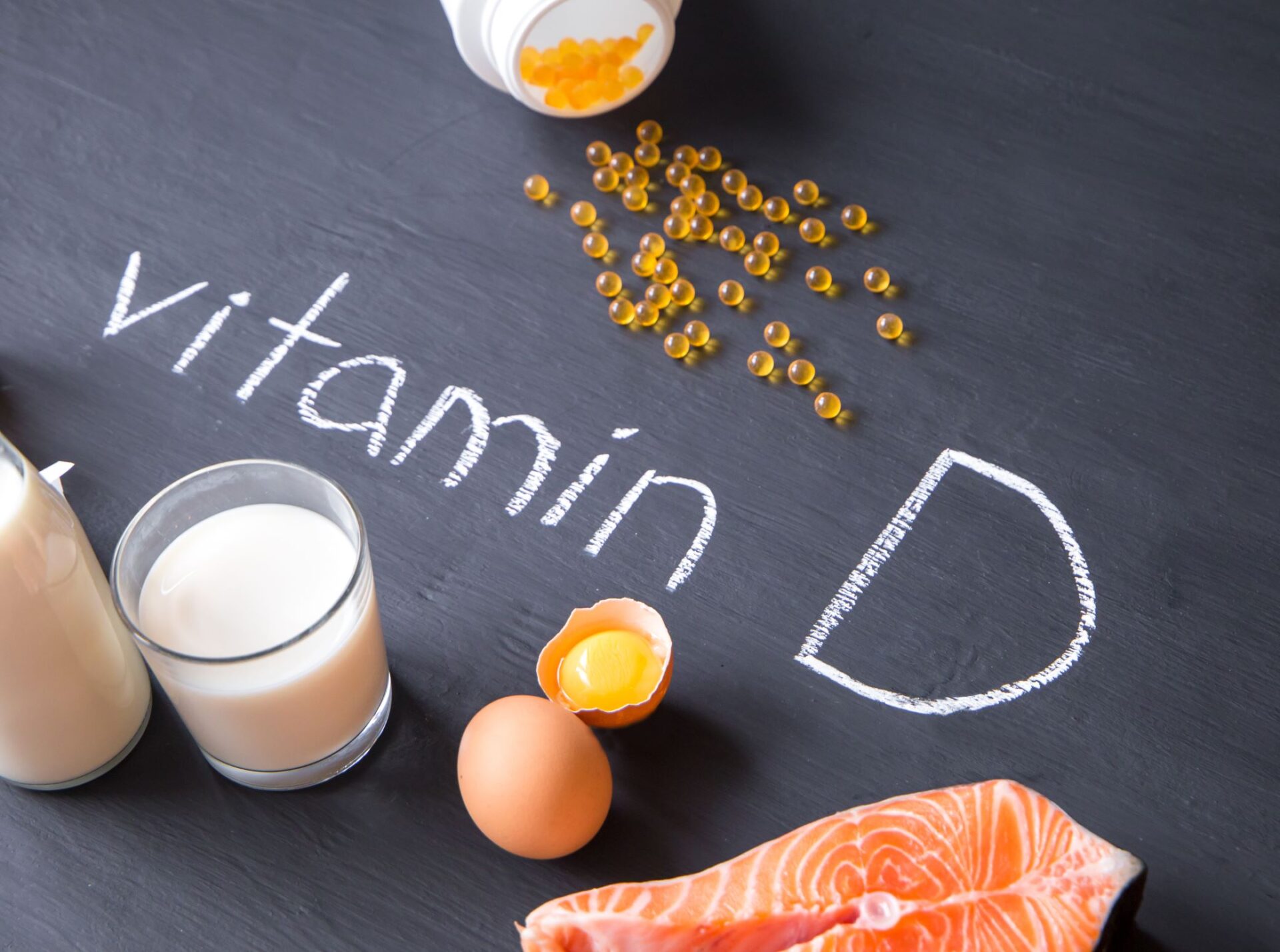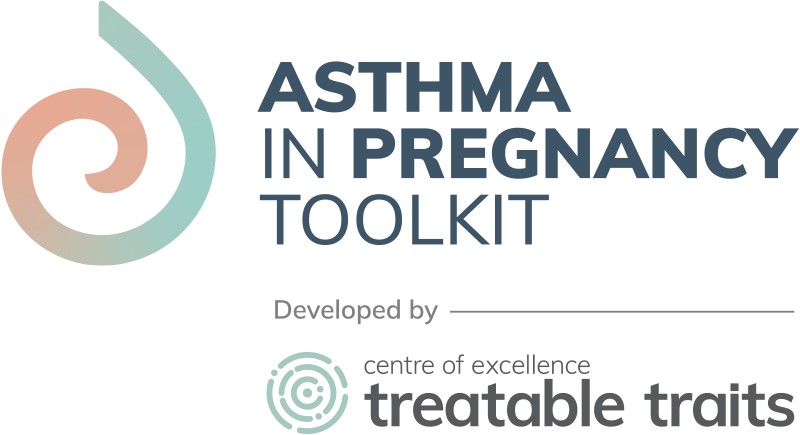Key messages
- Low circulating vitamin D levels are common during pregnancy in women with asthma and may be associated with adverse maternal and infant outcomes.
- Dietary intake and sun exposure is generally inadequate to meet requirements, therefore supplementation during pregnancy is recommended.
- Supplementation of the exclusively breastfed infant is also recommended.
Mechanism
Vitamin D is a fat soluble nutrient that is produced in the skin when 7-dehydrocholesterol interacts with ultraviolet irradiation and obtained from limited dietary sources – in particular, dairy products, eggs and fish.
Both the endogenous form vitamin D3 (cholecalciferol), and the plant-derived form, vitamin D2 (ergocalciferol), are considered the main forms of vitamin D. Whether produced in the skin from 7-DHC or obtained from the diet, vitamin D must be activated first to 25-hydroxyvitamin D (25OHD) and then to its active form 1,25(OH)2D. The 25-hydroxylation of vitamin D can be facilitated by several enzymes, but the most important is CYP2R1. CYP27B1 is the only enzyme responsible for the subsequent 1α-hydroxylation to 1,25(OH)2D. In medical use Vitamin D3 (cholecalciferol) is preferred (for non-vegans). D3 supplements tend to raise blood concentrations of 25OHD vitamin more and sustain those levels longer than D2. (Tripkovic et al. 2012)
Sufficient levels of vitamin D are important to maintain calcium and phosphorus levels. Vitamin D also helps to aid several metabolic functions, such as transcription regulation and bone metabolism (Prentice 2008).
Indications
Vitamin D deficiency is common during pregnancy. The prevalence of severe deficiency (<25nmol/L) in pregnant women ranges from 18–90% around the world, and is dependent on skin pigmentation, lifestyle and sunlight exposure. Maternal vitamin D levels largely determine the levels in the neonate (Karras et al. 2013, Wagner et al. 2012).
Vitamin D status is assessed by measuring circulating 25 hydroxyvitamin D [25(OH)D] levels. Vitamin D deficiency is defined by a 25(OH)D value <50nmol/L (<20ng/mL) with severe deficiency defined as <30nmol/L (<12ng/mL), according to the Institute of Medicine (IOM). However, the Endocrine Society supports a value ≥75nmol/L as sufficient.
If women are at risk of deficiency, Vitamin D can be measured in plasma or serum (serum is preferred) (Harvey et al. 2020). International guidelines recommend a dietary intake of 400 – 600IU per day, and if supplementation is given, 400IU per day (equivalent to 10 micrograms cholecalciferol) is recommended (Curtis et al. 2018). Approximately one in four women with asthma have been reported to have Vitamin D deficiency during pregnancy (Jensen et al. 2019, 2020).

Serum 25(OH)D status of 103 Australian pregnant women with asthma categorised as ‘sufficient’, ‘insufficient’ and ‘deficient’ at 35 weeks gestation. 25(OH)D: 25-hydroxyvitamin D. Adapted from: Jensen et al. 2020.
Evidence for safety relating to fecundity, pregnancy and breastfeeding
There is evidence that Vitamin D contributes to lung growth during fetal–neonatal life and modulates both innate and adaptive immunity, inhibiting some proinflammatory responses associated with allergy and asthma. An inverse association has been reported between maternal Vitamin D status and the risk of asthma in the offspring. There is some evidence to support maternal vitamin D status/ higher maternal 25OHD levels during pregnancy being linked to a low risk of infant and childhood respiratory outcomes, including parent-reported wheeze and acute-care presentations and OCS use in the first 12months of life (Jensen et al. 2019).
More recently, attention has been paid to the potential association between low Vitamin D levels in pregnancy and the risk of pre-eclampsia, gestational diabetes mellitus and intrauterine growth restriction (Hu et al. 2022). Specifically in women with asthma, a higher incidence of pre-eclampsia has been reported in those with 25OHD levels <75nmol/L compared to those with 25OHD levels ≥75nmol/L (Jensen et al. 2020, Mirzakhani et al. 2017).
If the infants are breastfeeding alone there is a recommendation for either supplementation of mother or infant with vitamin D, as there are low levels of vitamin D in breastmilk (Hu et al. 2022). Vitamin D supplementation is recommended for the exclusively breastfed infant at 400IU per day. Supplementation can be administered in the form of drops that can be placed on the nipple before breastfeeding or a clean finger inserted into the infants mouth.

